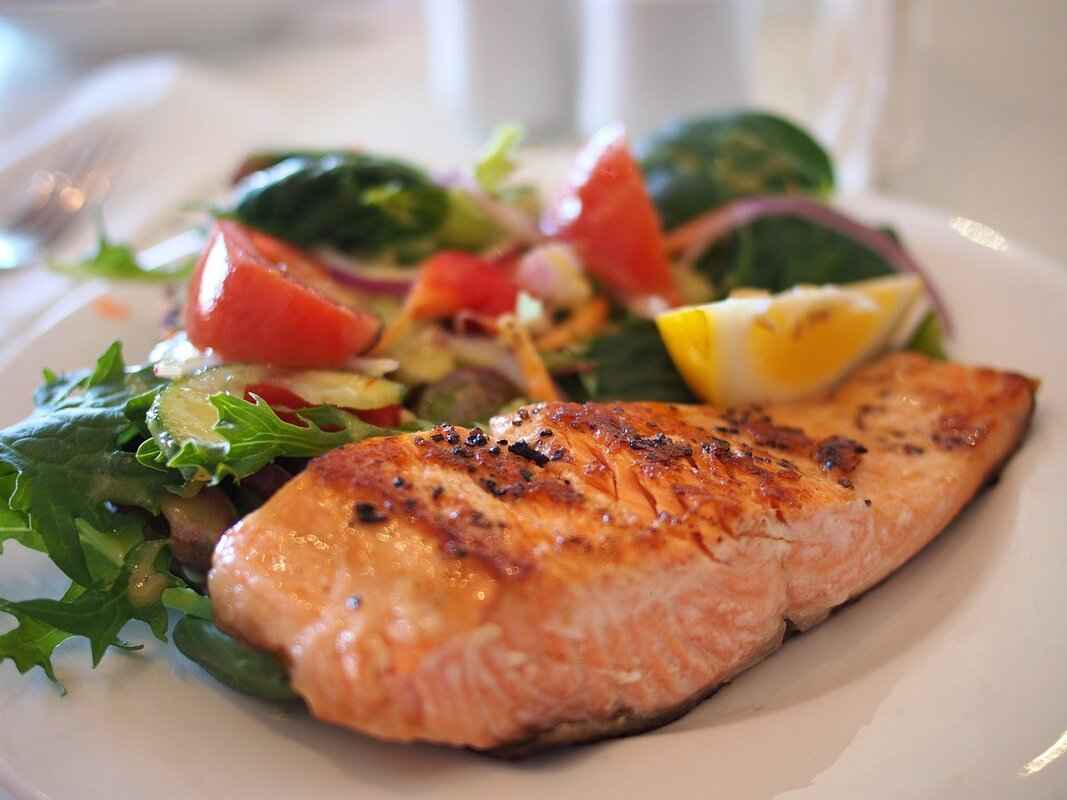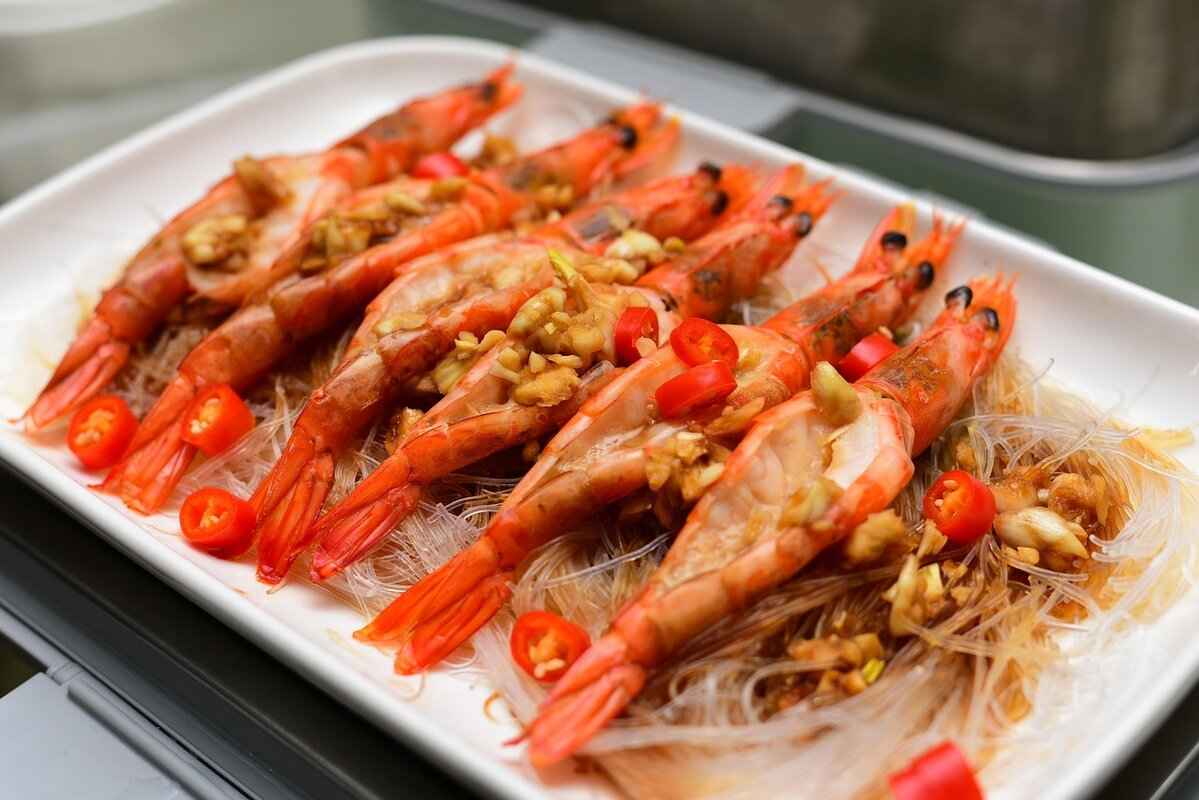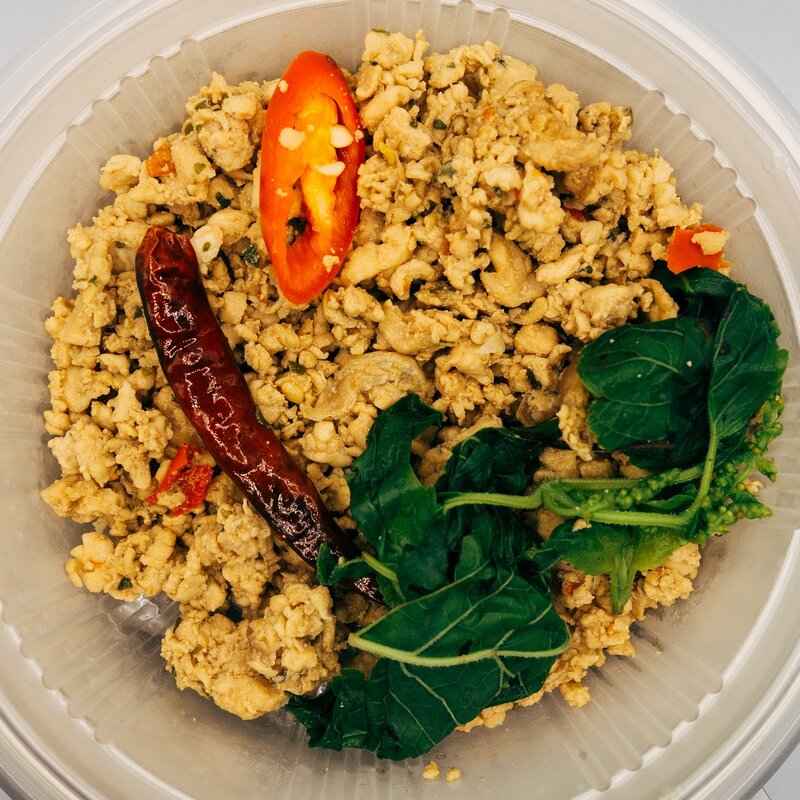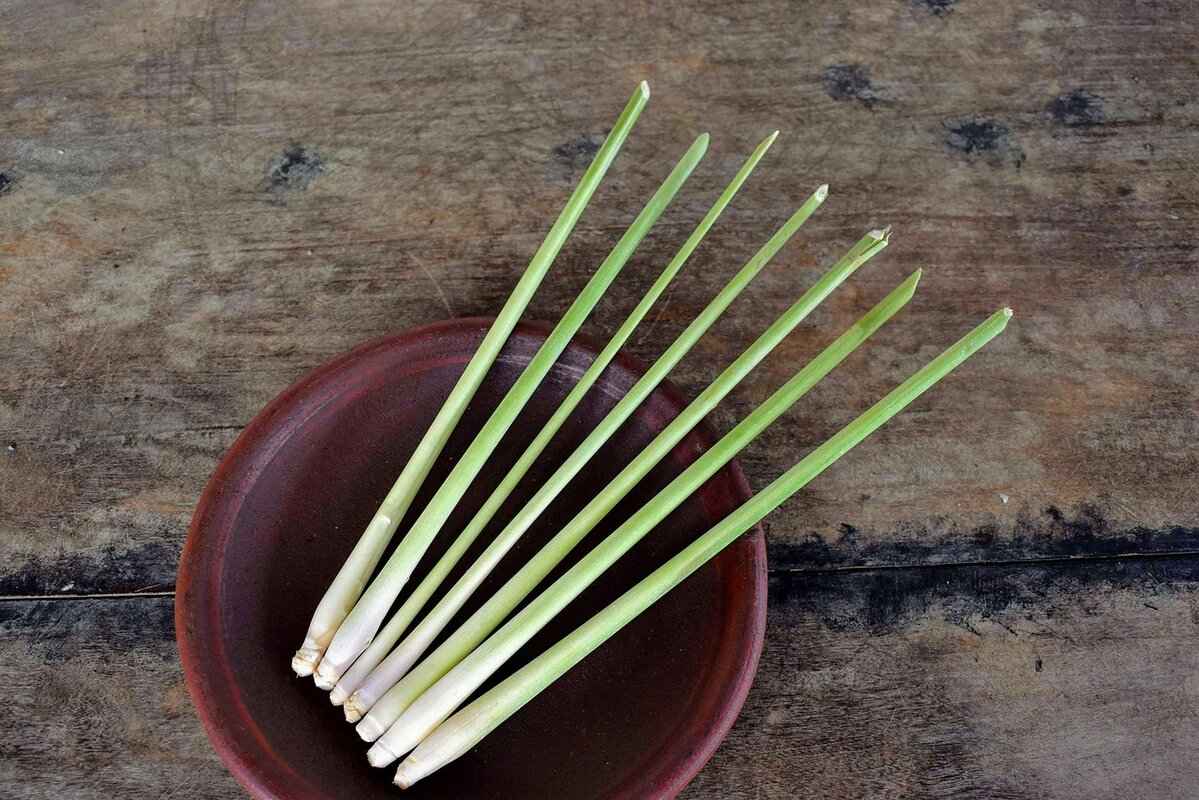This article delves into the harmonious blend of Asian cuisine and the Mediterranean diet, showcasing how this fusion can significantly enhance heart health through the incorporation of balanced nutrition and vibrant flavors. Both culinary traditions offer unique ingredients and cooking techniques that, when combined, create meals that are not only delicious but also beneficial for cardiovascular well-being.
What Are the Key Components of the Mediterranean Diet?
The Mediterranean diet is renowned for its heart-healthy attributes, primarily due to its focus on whole foods. Key components include:
- Fruits and Vegetables: A wide variety of fresh produce is encouraged, providing essential vitamins and minerals.
- Healthy Fats: Sources like olive oil and nuts are staples, promoting heart health.
- Whole Grains: Foods such as whole wheat bread and brown rice offer fiber and nutrients.
- Lean Proteins: Fish, poultry, and legumes are preferred over red meats.
How Does Asian Cuisine Contribute to Heart Health?
Asian cuisine boasts a plethora of ingredients and cooking methods that support cardiovascular health. For instance:
- Herbs and Spices: Ingredients like garlic, ginger, and turmeric are celebrated for their anti-inflammatory properties.
- Lean Proteins: Fish, tofu, and legumes are common, providing essential amino acids while minimizing saturated fats.
What Are the Health Benefits of Common Asian Ingredients?
Many ingredients found in Asian cooking offer significant health benefits:
- Garlic: Known for its ability to lower cholesterol and blood pressure.
- Ginger: Aids in digestion and has anti-inflammatory effects.
- Turmeric: Contains curcumin, which may help reduce heart disease risk.
How Do Herbs and Spices Enhance Flavor and Health?
Herbs and spices in Asian cuisine not only elevate taste but also provide numerous health benefits. For example, coriander and cumin are rich in antioxidants, while chili peppers can boost metabolism and improve circulation.
What Role Do Lean Proteins Play in Asian Dishes?
Lean proteins are pivotal in Asian cooking, with options like:
- Fish: Rich in omega-3 fatty acids, crucial for heart health.
- Tofu: A plant-based protein that is low in fat and versatile.
- Legumes: Such as lentils and chickpeas, which provide fiber and nutrients.
How Can Cooking Methods Impact Heart Health?
Cooking techniques prevalent in Asian cuisine, such as steaming and stir-frying, help retain nutrients and reduce the need for unhealthy fats, aligning perfectly with heart-healthy practices.
What Are the Benefits of Combining Asian and Mediterranean Flavors?
Merging the flavors and ingredients of Asian and Mediterranean cuisines can lead to the creation of delicious, heart-healthy meals that are both satisfying and nutritionally balanced. This fusion allows for innovative dishes that cater to diverse palates.
How Can You Incorporate Asian Ingredients into Mediterranean Dishes?
Incorporating Asian ingredients such as sesame oil, miso, or rice noodles into Mediterranean recipes can enhance flavor while adding beneficial nutrients, promoting heart health.
What Are Some Popular Recipes That Blend Both Cuisines?
Exploring fusion recipes that combine elements from both Asian and Mediterranean cuisines can provide exciting new meal options. For example, a Thai basil pesto or a Mediterranean-style stir-fry can delight the taste buds while supporting heart health.

What Are the Key Components of the Mediterranean Diet?
The Mediterranean diet is widely recognized for its numerous health benefits, particularly its positive impact on heart health. By focusing on whole foods, healthy fats, and a variety of fruits and vegetables, this diet offers a balanced approach to nutrition that can lead to improved cardiovascular outcomes. In this section, we will delve into the key components of the Mediterranean diet, highlighting their significance and how they contribute to overall well-being.
- Whole Foods: The foundation of the Mediterranean diet is built on whole, unprocessed foods. This includes an abundance of fruits, vegetables, whole grains, legumes, and nuts. These foods are rich in essential nutrients, fiber, and antioxidants, which are crucial for maintaining heart health.
- Healthy Fats: Unlike many diets that restrict fats, the Mediterranean diet encourages the consumption of healthy fats, particularly from sources like olive oil, avocados, and fatty fish. These fats are known to lower bad cholesterol levels while raising good cholesterol, contributing to a healthier heart.
- Variety of Fruits and Vegetables: A colorful array of fruits and vegetables is a hallmark of the Mediterranean diet. These foods are packed with vitamins, minerals, and phytonutrients that support cardiovascular health. Regular consumption of fruits like berries, citrus, and vegetables such as leafy greens and tomatoes can reduce inflammation and improve overall heart function.
- Lean Proteins: The diet emphasizes lean protein sources, such as fish, poultry, and legumes, while limiting red meat and processed meats. Fish, particularly fatty fish like salmon and sardines, are rich in omega-3 fatty acids, which have been shown to reduce the risk of heart disease.
- Moderate Dairy: Dairy products, particularly those that are low-fat or fermented, such as yogurt and cheese, are included in moderation. These foods provide calcium and probiotics that can positively impact gut health and overall nutrition.
- Herbs and Spices: Instead of relying on salt, the Mediterranean diet uses a variety of herbs and spices to enhance flavor. Ingredients like garlic, basil, and oregano not only add taste but also offer health benefits, including anti-inflammatory properties.
- Physical Activity: While not a food component, regular physical activity is an integral part of the Mediterranean lifestyle. Engaging in daily exercise helps maintain a healthy weight, improves cardiovascular fitness, and enhances overall well-being.
Incorporating these key components into daily meals can lead to significant health benefits. Research has shown that adherence to the Mediterranean diet is associated with a lower risk of heart disease, stroke, and other chronic conditions. Furthermore, the diet’s focus on whole foods and healthy fats can help manage weight and improve metabolic health.
In conclusion, the Mediterranean diet is not just a way of eating; it is a holistic approach that emphasizes the importance of nutrition and lifestyle in promoting heart health. By understanding and implementing its key components, individuals can enjoy delicious meals while reaping the benefits of a heart-healthy lifestyle.

How Does Asian Cuisine Contribute to Heart Health?
Asian cuisine is renowned for its vibrant flavors and diverse ingredients, making it not only a culinary delight but also a beneficial choice for heart health. This section delves into how the unique components of Asian cooking contribute to cardiovascular well-being.
One of the standout features of Asian cuisine is its emphasis on fresh ingredients and varied cooking techniques. Many traditional dishes incorporate a wide array of vegetables, lean proteins, and healthy fats, all of which play a significant role in promoting heart health.
- Herbs and Spices: Ingredients like ginger, garlic, and turmeric are staples in Asian cooking. These ingredients are known for their anti-inflammatory properties and can help lower cholesterol levels, reducing the risk of heart disease.
- Lean Proteins: Asian dishes often feature fish, tofu, and legumes as primary protein sources. These options provide essential amino acids while minimizing saturated fat intake, making them heart-friendly.
- Whole Grains: Staples such as brown rice and quinoa are commonly used, offering fiber and nutrients that are beneficial for heart health.
Asian cooking methods, such as steaming and stir-frying, are not only quick but also help retain the nutrients in food. These techniques often require less oil compared to traditional frying, which aligns with heart-healthy practices. By using healthy oils like sesame oil or olive oil in moderation, dishes can be flavorful without compromising health.
The diversity found in Asian cuisine means that meals are often rich in antioxidants and vitamins. This variety not only makes meals more enjoyable but also ensures that the body receives a broad spectrum of nutrients essential for maintaining heart health.
Absolutely! Integrating Asian ingredients into your daily meals can be simple and rewarding. Consider adding miso to soups, using rice noodles in salads, or incorporating edamame into your dishes. These small changes can significantly enhance the nutritional profile of your meals.
Some delicious options include:
- Vegetable Stir-Fry: Packed with colorful vegetables and a light sauce, this dish is both nutritious and satisfying.
- Grilled Salmon with Ginger Soy Glaze: Rich in omega-3 fatty acids, this dish is great for heart health.
- Tofu and Broccoli: A simple yet flavorful combination that provides plant-based protein and essential nutrients.
In summary, Asian cuisine offers a wealth of ingredients and cooking methods that are conducive to heart health. By embracing these culinary traditions, individuals can enjoy flavorful meals while supporting their cardiovascular well-being.
What Are the Health Benefits of Common Asian Ingredients?
Asian cuisine is renowned for its vibrant flavors and diverse ingredients, many of which offer significant health benefits. In particular, ingredients such as garlic, ginger, and turmeric are celebrated not only for their culinary uses but also for their medicinal properties. Understanding these benefits can help you make informed dietary choices that promote heart health.
Garlic is a staple in many Asian dishes and is known for its anti-inflammatory and cholesterol-lowering properties. Research indicates that garlic can help reduce total cholesterol levels, particularly LDL cholesterol (often referred to as “bad” cholesterol). Additionally, garlic contains compounds such as allicin, which may improve blood circulation and lower blood pressure, further enhancing cardiovascular health.
Ginger is another powerful ingredient commonly used in Asian cooking. It is rich in gingerol, a compound that has been shown to possess anti-inflammatory effects. Regular consumption of ginger may help reduce markers of inflammation in the body, which is crucial for maintaining a healthy heart. Moreover, ginger can aid in digestion and may help lower blood sugar levels, making it a versatile addition to a heart-healthy diet.
Turmeric, often used in curries and other Asian dishes, contains curcumin, a compound celebrated for its anti-inflammatory and antioxidant properties. Studies suggest that curcumin can help reduce cholesterol levels and improve endothelial function, which is vital for maintaining healthy blood vessels. Incorporating turmeric into your meals can be a delicious way to enhance both flavor and health benefits.
When combined, garlic, ginger, and turmeric create a powerhouse of health benefits. Their synergistic effects can lead to improved heart health by combating inflammation, lowering cholesterol levels, and enhancing blood circulation. Incorporating these ingredients into your daily meals can be as simple as adding them to stir-fries, soups, or marinades.
- Garlic: Use minced garlic in dressings, marinades, or sautéed vegetables.
- Ginger: Grate fresh ginger into smoothies, teas, or stir-fries for a zesty kick.
- Turmeric: Add turmeric powder to rice dishes, soups, or smoothies for a vibrant color and flavor.
Incorporating these ingredients into your diet doesn’t have to be complicated. By experimenting with different recipes and cooking methods, you can easily enhance the nutritional profile of your meals while enjoying the rich flavors characteristic of Asian cuisine. Whether it’s a warm bowl of ginger-infused soup or a garlic stir-fry, the heart-healthy benefits are just a dish away!
How Do Herbs and Spices Enhance Flavor and Health?
Herbs and spices are the backbone of Asian cuisine, providing not only vibrant flavors but also a plethora of health benefits. Their incorporation into meals transforms ordinary dishes into extraordinary culinary experiences, while simultaneously promoting overall well-being.
Many herbs and spices prevalent in Asian cooking, such as ginger, turmeric, and garlic, are renowned for their medicinal properties. For instance:
- Ginger is well-known for its anti-nausea effects and can also aid digestion.
- Turmeric, with its active compound curcumin, is celebrated for its anti-inflammatory and antioxidant properties, which can contribute to better heart health.
- Garlic has been linked to lower blood pressure and cholesterol levels, making it a powerful ally in cardiovascular health.
Asian cooking often utilizes a combination of herbs and spices to create complex flavor profiles. For example:
- Cilantro adds a fresh, zesty note to dishes, making them more appealing.
- Star anise provides a sweet and licorice-like flavor that enhances the depth of soups and stews.
- Chili peppers introduce heat, which can stimulate the palate and enhance the overall dining experience.
Beyond flavor enhancement, herbs and spices can play a vital role in maintaining a healthy diet. Research has shown that:
- Many herbs and spices, such as cinnamon, can help regulate blood sugar levels.
- Herbs like basil and oregano are rich in antioxidants, which help combat oxidative stress in the body.
- Using spices instead of salt can significantly reduce sodium intake, beneficial for heart health.
To reap the benefits of herbs and spices, consider these practical tips:
- Experiment with fresh herbs: Use fresh basil, cilantro, or mint to brighten up salads and main dishes.
- Try spice blends: Explore Asian spice mixes like five-spice powder or curry powder to add depth to your meals.
- Infuse oils: Create flavored oils with garlic or chili to use in dressings or marinades.
In conclusion, the use of herbs and spices in Asian cooking not only enhances the flavor of dishes but also provides significant health benefits. By incorporating a variety of these ingredients into your meals, you can enjoy a more flavorful and nutritious diet that supports heart health and overall well-being.
What Role Do Lean Proteins Play in Asian Dishes?
Asian cuisine is renowned for its vibrant flavors and diverse ingredients, and one of the key elements that contribute to its health benefits is the inclusion of lean proteins. These proteins are not only essential for muscle repair and growth but also play a crucial role in promoting heart health. In this section, we will explore the significance of lean proteins in Asian dishes and how they can enhance overall well-being.
Lean proteins are those that contain low levels of saturated fat, which is beneficial for heart health. In Asian cuisine, some of the most common sources of lean protein include:
- Fish: Particularly fatty fish like salmon and mackerel, which are rich in omega-3 fatty acids.
- Tofu: A versatile soy product that is a great source of protein and can be used in various dishes.
- Legumes: Such as lentils, chickpeas, and beans, which are high in protein and fiber.
Incorporating lean proteins into meals can significantly impact cardiovascular health. For instance, fish is known for its high omega-3 content, which helps reduce inflammation and lower blood pressure. Studies have shown that regular fish consumption is associated with a lower risk of heart disease.
Tofu is another excellent option, especially for those following a vegetarian or vegan diet. It is low in saturated fat and high in protein, making it a heart-healthy alternative to red meat. Additionally, legumes offer a wealth of nutrients, including fiber, which can aid in lowering cholesterol levels.
Asian cuisine employs various cooking methods that enhance the health benefits of lean proteins. Some popular techniques include:
- Steaming: This method preserves nutrients and flavors without the need for excessive oils.
- Stir-frying: Using minimal oil and high heat allows for quick cooking, retaining the protein’s integrity.
- Grilling: Often used for fish, grilling adds a smoky flavor while keeping the dish light.
There are numerous delicious Asian dishes that highlight lean proteins:
- Sushi: A classic Japanese dish often made with fish and rice, providing a perfect balance of protein and carbohydrates.
- Mapo Tofu: A spicy Sichuan dish that showcases tofu in a flavorful sauce, rich in spices and herbs.
- Dal: A staple in Indian cuisine, this lentil-based dish is packed with protein and fiber, often served with rice or bread.
Incorporating lean proteins into your diet not only promotes heart health but also contributes to overall nutrition. They provide essential amino acids necessary for various bodily functions, including:
- Muscle Maintenance: Vital for athletes and active individuals.
- Weight Management: High-protein diets can help control appetite and reduce cravings.
- Bone Health: Certain proteins, like those found in fish, also support bone density.
In conclusion, lean proteins such as fish, tofu, and legumes are integral to Asian cuisine, offering numerous health benefits while aligning with heart-healthy dietary practices. By incorporating these proteins into your meals, you can enjoy a delicious and nutritious diet that promotes overall well-being.
How Can Cooking Methods Impact Heart Health?
Cooking methods play a crucial role in determining the nutritional value of our meals, especially when it comes to heart health. In Asian cuisine, techniques such as steaming and stir-frying not only enhance flavor but also ensure that food retains its essential nutrients. This article delves into how these methods contribute to a heart-healthy diet.
Steaming is a popular cooking technique in many Asian cultures, known for its ability to preserve the natural flavors and nutrients of food. By cooking vegetables, fish, and poultry with steam, the need for added fats is significantly reduced. This method helps maintain the integrity of vitamins and minerals, making meals more nutritious.
- Preservation of Nutrients: Steaming retains water-soluble vitamins, such as vitamin C and several B vitamins, which can be lost during boiling.
- Lower Caloric Content: Since steaming does not require oils or fats, dishes prepared this way are generally lower in calories, making them ideal for weight management.
- Enhanced Flavor: The natural flavors of ingredients are highlighted, allowing for a more authentic taste without the need for excessive seasoning.
Stir-frying is another cooking method prevalent in Asian cuisine that offers numerous health benefits. This technique involves quickly cooking food over high heat with a small amount of oil, which allows for a quick sear while preserving the texture and nutrients of the ingredients.
- Quick Cooking Time: The short cooking duration helps to lock in nutrients that might be lost in longer cooking processes.
- Use of Healthy Oils: Common oils used in stir-frying, such as sesame or olive oil, provide healthy fats that are beneficial for heart health.
- Incorporation of Vegetables: Stir-frying often includes a variety of colorful vegetables, which contribute to a balanced diet rich in antioxidants and fiber.
Asian cooking techniques are not just about flavor; they are deeply rooted in health benefits that align with heart-healthy practices. By utilizing methods that minimize fat and maximize nutrient retention, Asian cuisine offers a variety of dishes that can be both satisfying and beneficial for cardiovascular health.
- Reduced Saturated Fats: Many traditional Asian dishes rely on cooking methods that do not require heavy oils or fats, reducing the intake of saturated fats associated with heart disease.
- Increased Fiber: The emphasis on vegetables, whole grains, and legumes in Asian diets promotes higher fiber intake, which is essential for heart health.
- Flavorful Alternatives: The use of herbs, spices, and aromatics in Asian cooking provides flavor without the need for excessive salt or unhealthy additives.
In conclusion, the cooking methods prevalent in Asian cuisine, such as steaming and stir-frying, are vital for promoting heart health. By retaining nutrients and minimizing unhealthy fats, these techniques align perfectly with a heart-healthy lifestyle. Incorporating these methods into daily cooking can lead to delicious and nutritious meals that support overall well-being.

What Are the Benefits of Combining Asian and Mediterranean Flavors?
Combining the vibrant flavors and diverse ingredients of Asian and Mediterranean cuisines can yield delicious and nutritionally balanced meals that promote heart health. Each culinary tradition brings its own unique elements, enhancing both flavor and wellness. This article delves into the benefits of merging these two rich culinary worlds, offering insights into how they can work harmoniously to create satisfying dishes.
The fusion of Asian and Mediterranean cuisines not only tantalizes the taste buds but also supports a heart-healthy lifestyle. Here are some notable benefits:
- Diverse Nutritional Profiles: Asian cuisine often emphasizes vegetables, lean proteins, and whole grains, while Mediterranean dishes highlight healthy fats, such as olive oil, and a variety of fruits and legumes. This combination ensures a wide range of essential nutrients.
- Enhanced Flavor: The use of herbs and spices in both cuisines, such as ginger, garlic, basil, and cumin, not only boosts flavor but also offers numerous health benefits, including anti-inflammatory properties.
- Heart-Healthy Cooking Techniques: Techniques like steaming, grilling, and stir-frying used in Asian cooking help retain nutrients while minimizing unhealthy fats, aligning perfectly with Mediterranean cooking methods.
- Increased Variety: Merging these two cuisines introduces a wealth of new flavors and textures, making meals more exciting and less monotonous.
Incorporating Asian ingredients into Mediterranean recipes can be both fun and rewarding. Here are some suggestions:
- Sesame Oil: Use sesame oil in salad dressings or drizzled over roasted vegetables for a nutty flavor.
- Miso Paste: This fermented soybean paste can add depth to Mediterranean soups or marinades.
- Rice Noodles: Swap out traditional pasta for rice noodles in Mediterranean-style stir-fries or salads.
Here are a few inspiring recipes that showcase the delightful fusion of Asian and Mediterranean flavors:
- Spicy Miso Hummus: Combine chickpeas, tahini, miso paste, and a dash of chili oil for a unique twist on traditional hummus.
- Sesame Ginger Quinoa Salad: Toss cooked quinoa with fresh vegetables, sesame oil, and ginger for a refreshing side dish.
- Grilled Tofu and Vegetable Skewers: Marinate tofu in a mixture of olive oil, soy sauce, and herbs before grilling with Mediterranean vegetables.
By merging the flavors and ingredients of Asian and Mediterranean cuisines, you can create meals that are not only delicious but also heart-healthy. This culinary fusion offers a fantastic opportunity to explore new tastes while maintaining a balanced diet. Embrace the best of both worlds and enjoy the journey of flavor!
How Can You Incorporate Asian Ingredients into Mediterranean Dishes?
Incorporating Asian ingredients into Mediterranean dishes offers a unique opportunity to enhance flavors while promoting heart health. By blending these two rich culinary traditions, you can create meals that are not only delicious but also packed with nutrients. This article delves into practical ways to integrate Asian ingredients into your Mediterranean recipes, highlighting their health benefits and culinary versatility.
Asian ingredients such as sesame oil, miso, and rice noodles are known for their distinctive flavors and health benefits. These ingredients can elevate traditional Mediterranean dishes by adding depth and complexity, while also supporting heart health through their nutritional profiles.
- Sesame Oil: Rich in polyunsaturated fats, sesame oil can help lower bad cholesterol levels and improve heart health.
- Miso: This fermented soybean paste is a source of probiotics, which can aid digestion and enhance gut health.
- Rice Noodles: A gluten-free alternative to traditional pasta, rice noodles are lower in calories and can be a healthy option for those watching their weight.
Integrating Asian ingredients into Mediterranean recipes can be simple and rewarding. Here are some practical ideas:
- Sesame Oil Salad Dressing: Combine sesame oil with lemon juice, garlic, and herbs to create a vibrant dressing for Mediterranean salads.
- Miso Marinade: Use miso as a base for marinades, pairing it with olive oil and herbs to marinate fish or chicken before grilling or baking.
- Rice Noodle Stir-Fry: Replace traditional pasta with rice noodles in a Mediterranean stir-fry, adding seasonal vegetables and a splash of soy sauce for a flavorful twist.
Yes, there are many exciting recipes that fuse Asian and Mediterranean flavors. Here are a few popular options:
- Asian-Inspired Greek Salad: Toss together cucumbers, tomatoes, and olives with sesame oil and a splash of rice vinegar for a refreshing salad.
- Miso-Glazed Eggplant: Roast eggplant brushed with a miso glaze and serve it alongside a quinoa salad for a hearty meal.
- Sesame Tofu with Mediterranean Vegetables: Stir-fry tofu with bell peppers, zucchini, and cherry tomatoes, drizzling with sesame oil for added flavor.
Utilizing healthy cooking methods is essential when combining these cuisines. Techniques such as steaming and stir-frying not only preserve the nutrients in your ingredients but also reduce the need for added fats, aligning with heart-healthy cooking practices.
By thoughtfully incorporating Asian ingredients into Mediterranean dishes, you can create meals that are both flavorful and beneficial for heart health. This fusion not only excites the palate but also encourages a balanced approach to nutrition, making it easier to enjoy the best of both worlds.
What Are Some Popular Recipes That Blend Both Cuisines?
Exploring the world of fusion cuisine can be an exciting culinary adventure, especially when blending the vibrant flavors of Asian cuisine with the wholesome ingredients of the Mediterranean diet. This combination not only creates delicious meals but also supports heart health through nutritious choices. Let’s delve into some popular recipes that beautifully merge these two culinary traditions.
- Sesame Ginger Hummus: This innovative twist on traditional hummus incorporates tahini, sesame oil, and fresh ginger, offering a unique flavor profile. Serve it with crisp vegetables or whole-grain pita for a heart-healthy snack.
- Thai Basil Quinoa Salad: Combining quinoa, a staple of the Mediterranean diet, with Thai basil, bell peppers, and a light lime dressing creates a refreshing salad. This dish is rich in protein and fiber, making it a perfect meal option.
- Teriyaki Grilled Vegetables: Marinate seasonal vegetables in a homemade teriyaki sauce made from soy sauce, honey, and garlic. Grill them to perfection and serve alongside grilled fish, a great source of lean protein.
- Miso Pasta Primavera: This dish features whole-grain pasta tossed with seasonal vegetables and a miso-based sauce, adding umami flavor while keeping it heart-healthy. The combination of whole grains and vegetables is both filling and nutritious.
- Sushi-Stuffed Peppers: Replace traditional sushi rice with quinoa and stuff it into bell peppers along with avocado, cucumber, and crab. This recipe maintains the essence of sushi while incorporating Mediterranean elements.
- Chickpea and Tofu Stir-Fry: This protein-packed dish combines chickpeas and tofu with a variety of colorful vegetables, seasoned with garlic and ginger. Serve it over brown rice for a wholesome meal.
- Spicy Szechuan Eggplant with Feta: This dish features eggplant sautéed in a spicy Szechuan sauce topped with crumbled feta cheese. The creaminess of the feta balances the heat, creating a delightful fusion of flavors.
- Green Curry Risotto: Using arborio rice, this creamy risotto is infused with green curry paste and coconut milk, topped with fresh herbs. It’s a comforting dish that showcases the best of both worlds.
These recipes illustrate how the combination of Asian and Mediterranean cuisines can create exciting new meal options that cater to diverse palates. By incorporating ingredients from both traditions, you can enjoy meals that are not only flavorful but also promote heart health.
When preparing these dishes, consider using fresh, whole ingredients and healthy cooking methods such as grilling, steaming, or stir-frying. This approach will help retain nutrients and flavor while keeping your meals heart-healthy. Experimenting with different ingredients and flavors can lead to delightful culinary discoveries that nourish the body and satisfy the taste buds.
In conclusion, the fusion of Asian and Mediterranean cuisines offers a plethora of nutritionally balanced meals that are both satisfying and beneficial for heart health. By embracing these recipes, you can explore new flavors while adhering to a heart-healthy diet.
Frequently Asked Questions
- What are the main health benefits of the Mediterranean diet?
The Mediterranean diet is packed with whole foods, healthy fats, and a colorful array of fruits and vegetables. It’s known to reduce the risk of heart disease, improve cholesterol levels, and support weight management. Think of it as a delicious way to nourish your heart while enjoying flavorful meals!
- How does Asian cuisine support heart health?
Asian cuisine is rich in ingredients like garlic, ginger, and turmeric, which are renowned for their anti-inflammatory properties. These ingredients can help lower cholesterol and boost overall heart health. Plus, cooking methods like steaming and stir-frying keep nutrients intact, making your meals both tasty and heart-smart!
- Can I mix Asian and Mediterranean flavors in my cooking?
Absolutely! Combining Asian and Mediterranean ingredients can lead to mouthwatering dishes that are also heart-healthy. Try adding sesame oil or miso to your Mediterranean salads or using rice noodles in a Mediterranean-inspired stir-fry for a delightful twist!
- What are some easy recipes that blend these two cuisines?
Some popular fusion recipes include Mediterranean-style sushi rolls, miso-infused hummus, or a stir-fried quinoa salad with Mediterranean veggies. These dishes not only tantalize your taste buds but also pack a nutritious punch!














